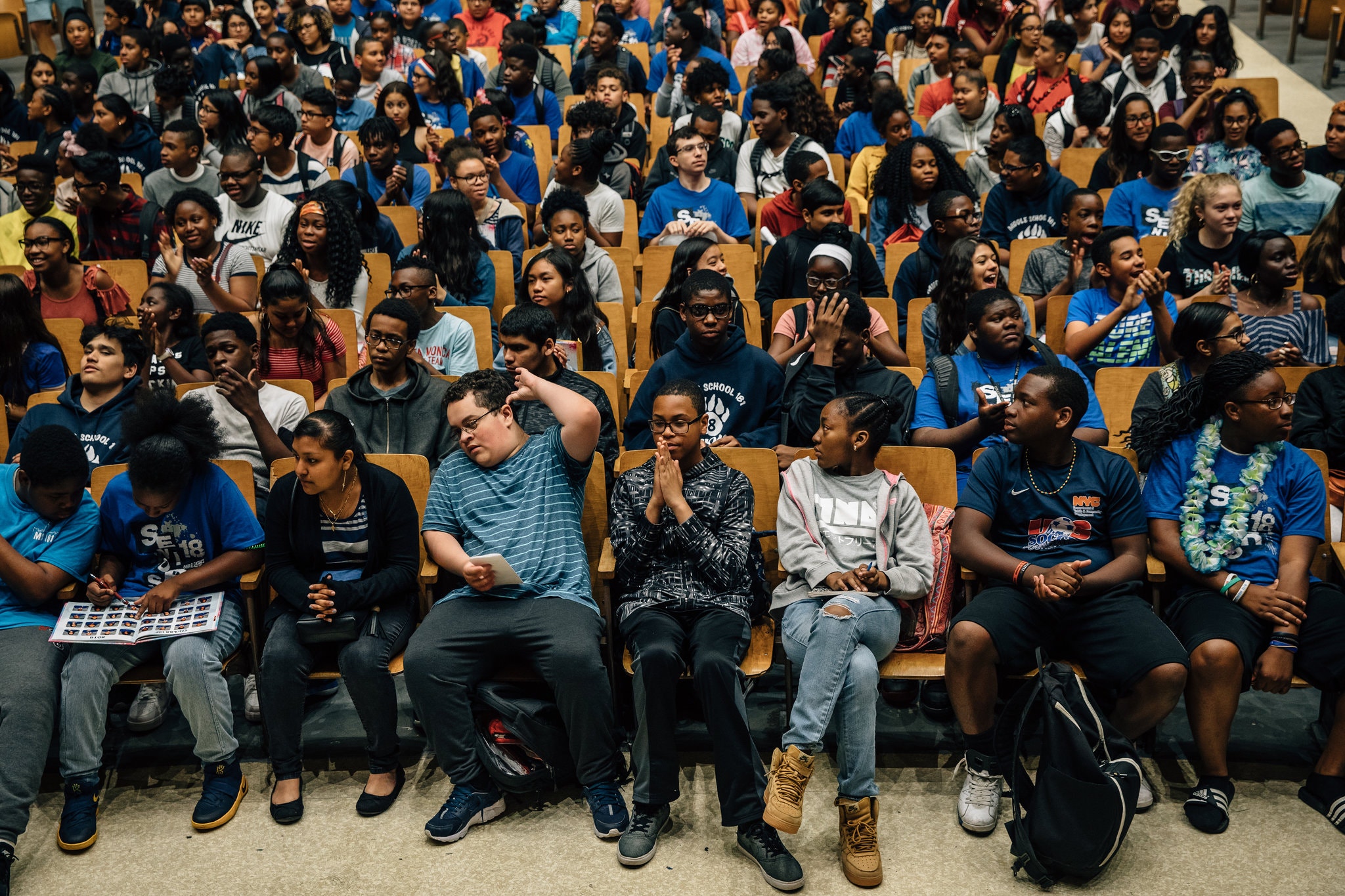🗽🇺🇸🔍 Rethinking traditional discipline, moving from a nation at risk to a nation at hope, preparing youth for the future of work, putting relationships at the center of education, and focusing on freshmen.
1. TRY: Rethink Traditional Discipline
Can restorative practices improve school climate and curb suspensions? According to new research RAND conducted in Pittsburgh Public Schools, that’s a “yes.” At schools that used restorative practices in place of traditional disciplinary measures, suspension rates among African-American and low-income students decreased. In addition, the schools saw shrinking disparities in suspension rates between African-American and white students, as well as between low- and higher-income students. Ready to rethink discipline in your school? You can learn more about restorative practices in this toolkit, this guide for schools, and this implementation guide. If you’re already using restorative practices in your school, share your story using #ReThinkHighSchool on social media.
2. EXPLORE: ‘A Nation at Hope’
Two years in the making, the Aspen Institute’s National Commission on Social, Emotional, and Academic Development recently released “Nation at Hope.” The report offers recommendations for communities to improve student outcomes by prioritizing social-emotional learning. Recs include: broaden the definition of student success; embed social, emotional, and cognitive skills in academics; build adult expertise in child development; and leverage community partners to address the whole child. We hope you’ll read the report, share the videos, explore the communication tools, and join the movement. Social-emotional learning is a part of the “deeper learning” design principle that XQ encourages schools to consider. “The principles behind deeper learning are deceptively simple: build trusting relationships with students, treat them as individuals, invest in their success, and help them mature into responsible and concerned adults armed with foundational knowledge and skills,” Michele Cahill, XQ’s Senior Advisor, said in the XQ blog Treating Students Like Humans.
3. READ: Automation advice

You’ve probably seen future of work stats. Things like, 47 percent of American jobs will be impacted by automation. Have no fear: according to the World Economic Forum, “while machines will be increasingly powerful, humans will actually be more essential.” They asked, “how can private sector leaders, educators and policy-makers go about changing the way we educate, employ and retrain citizens to empower them in this new skills economy?” It starts with an investment in youth. Their advice? Connect campuses and workplaces. Give students access to hands-on experiences. Train youth in different ways and support lifelong learning. Learn more about high school and the future of work in this guide.
4. CONSIDER: Relationships at the core

CreditCreditDamon Winter/The New York Times
Students learn from people they love. That’s the conclusion New York Times columnist David Brooks reached in his recent OpEd that encourages readers to put relationship quality at the center of education. “Love in this context means willing the good of another, and offering active care for the whole person,” Brooks explains. He offers a number of questions for educators to consider. Questions like, what is the quality of emotional relationships in your school? And, how would you design a school if you wanted to put relationship quality at the core? How would you answer these questions?
5. TRACK: Focus on freshmen
When you think about measuring high school success, things like graduation rates and college acceptance probably come to mind. A new Washington Post article shares a new perspective— that to keep high school school students on track, there’s no time like the beginning. The article highlights the development and findings of the Freshman On-Track Indicator described in Emily Krone Phillips’ book, “The Make-or-Break Year.” “American teenagers are often told they have to grow up when they become ninth-graders. But few schools focus on helping each student make that adjustment,” columnist Jay Mathews writes. “The on-track approach has not yet proved itself, but it makes sense. It deserves a try in places far from the Windy City.”
TAGS:







